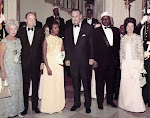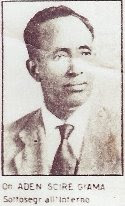 WASHINGTON — Senior State Department and American military officials are deeply divided over the pace and scale of military aid to Yemen, which is emerging as a crucial testing ground for the Obama administration’s approach to countering the threat from Al Qaeda. As the terrorism network’s Yemen branch threatens new attacks on the United States, the United States Central Command has proposed supplying Yemen with $1.2 billion in military equipment and training over the next six years, a significant escalation on a front in the campaign against terrorism, which has largely been hidden from public view. The aid would include automatic weapons, coastal patrol boats, transport planes and helicopters, as well as tools and spare parts. Training could expand to allow American logistical advisers to accompany Yemeni troops in some noncombat roles. Opponents, though, fear American weapons could be used against political enemies of President Ali Abdullah Saleh and provoke a backlash that could further destabilize the volatile, impoverished country.
WASHINGTON — Senior State Department and American military officials are deeply divided over the pace and scale of military aid to Yemen, which is emerging as a crucial testing ground for the Obama administration’s approach to countering the threat from Al Qaeda. As the terrorism network’s Yemen branch threatens new attacks on the United States, the United States Central Command has proposed supplying Yemen with $1.2 billion in military equipment and training over the next six years, a significant escalation on a front in the campaign against terrorism, which has largely been hidden from public view. The aid would include automatic weapons, coastal patrol boats, transport planes and helicopters, as well as tools and spare parts. Training could expand to allow American logistical advisers to accompany Yemeni troops in some noncombat roles. Opponents, though, fear American weapons could be used against political enemies of President Ali Abdullah Saleh and provoke a backlash that could further destabilize the volatile, impoverished country. 
The debate is unfolding as the administration reassesses how and when to use American missiles against suspected terrorists in Yemen following a botched strike in May. That attack, the fourth since December by the American military, killed a provincial deputy governor and set off tribal unrest. The Yemen quandary reflects the uncertainty the administration faces as it tries to prevent a repeat of the Dec. 25 attempted bombing of a Detroit-bound airliner by a Nigerian man trained in Yemen. American officials say a central role in preparing the attack was played by Anwar al-Awlaki, the American-born radical cleric now hiding with Al Qaeda in the Arabian Peninsula, the network’s branch in Yemen. “Yemen is the most dangerous place,” said Representative Jane Harman, a senior California Democrat on the House Homeland Security Committee who visited Yemen in March. “We’re much more likely to be attacked in the U.S. by someone inspired by, or trained by, people in Yemen than anything that comes out of Afghanistan.” Administration officials acknowledge that they are still trying to find the right balance between American strikes, military aid and development assistance — not only in Yemen, but in Pakistan, Somalia and other countries where Islamic extremist groups are operating. Daniel Benjamin, the State Department’s counterterrorism coordinator, said in a policy talk last week that American-backed assaults by Yemeni forces on Al Qaeda may “deny it the time and space it needs to organize, plan and train for operations.” But in the long term, he added, countering extremism in Yemen “must involve the development of credible institutions that can deliver real economic and social progress.” American military aid to Yemen has soared already, to $155 million in fiscal 2010 from less than $5 million in fiscal 2006, but American commanders say the assistance has been piecemeal. The proposal by the Central Command, which runs military operations in the Middle East and Central Asia, would represent a shift to a more comprehensive approach to strengthening Yemeni troops, proponents say.
“If we’re going to do this, we need to do it right, not dribble aid in and wonder why, if things worsen,” said one senior defense official involved in the debate, who agreed to speak candidly if he was not identified. “It’s like a forest fire. You fight to put it out, not watch it.” As many as 75 American Special Forces troops now train Yemeni forces, and some proponents of the plan envision these advisers also accompanying Yemeni troops on helicopter missions as logistical advisers. Military officials say that the aid would be phased in to avoid overwhelming Yemen’s tiny military, and that safeguards would ensure that equipment and troops trained by American counterterrorism experts were not diverted to domestic conflicts. In addition to Al Qaeda, Yemeni forces face so-called Houthi rebels in the north and a secessionist movement in the south. But senior State Department officials in Washington, as well as Stephen A. Seche, who just completed a three-year tour as the American ambassador to Yemen, oppose the plan, saying the threat — about 500 to 600 hard-core members of the Qaeda branch — does not justify building a 21st-century military force in the poorest country in the Arab world, which has no hostile neighbors, according to two senior administration officials. The critics say that security aid should be parceled out year by year to retain American leverage, and that it must be part of a far broader plan to promote development and stability. State Department officials offer a scaled-back alternative that focuses on providing Yemeni special forces with transport helicopters to allow them to operate from remote bases and deploy quickly against Qaeda cells, guided by American surveillance photographs and communications intercepts. Under this plan, American advisers would train Yemeni troops at upgraded operating bases in four or five remote locations. The goal would be to have Yemeni forces develop better informant networks to make ground strikes more precise, avoiding civilian casualties and the provocative American label on missile strikes. A senior military official said that Adm. Mike Mullen, the chairman of the Joint Chiefs of Staff, supported the aid package, which was first reported by The Wall Street Journal earlier this month. Its most enthusiastic proponent was Gen. David H. Petraeus, before he left his position as head of the Central Command in July to oversee allied forces in Afghanistan, two senior military officials said. His successor, Gen. James N. Mattis, initially viewed the proposal with skepticism, but now embraces the plan “lock, stock and barrel,” a senior defense official said. The Pentagon and State Department are reconciling differences as part of the budget process for next year, officials said. State Department officials said the May 25 strike that killed the deputy governor of Marib Province underscored the need for less reliance on American airstrikes and greater emphasis on improving the ability of Yemeni forces. For their part, American commanders say they have tightened the procedures for airstrikes against Qaeda suspects. If the Saleh government was once seen in Washington as too cozy with Islamic militants, that has changed, in part because Al Qaeda has stepped up its attacks. In recent weeks, Yemeni security forces have rousted Qaeda fighters from the southern city of Lawdar. In retaliation, Al Qaeda on Friday published the names of 55 regional security, police and intelligence officers, calling them “legitimate targets.” “That response shows Al Qaeda sees a real threat from security forces,” said Gregory Johnsen, a Yemen scholar at Princeton. But Mr. Johnsen said the priorities of President Saleh, an autocrat whose family has ruled for three decades, do not coincide with those of the United States. “If we’re just pouring money and equipment into the Yemeni military in the hopes that it will be used against Al Qaeda,” Mr. Johnsen said, “that hope doesn’t match either with history or current reality.” ERIC SCHMITT and SCOTT SHANE nytimes



.jpg)











No comments:
Post a Comment